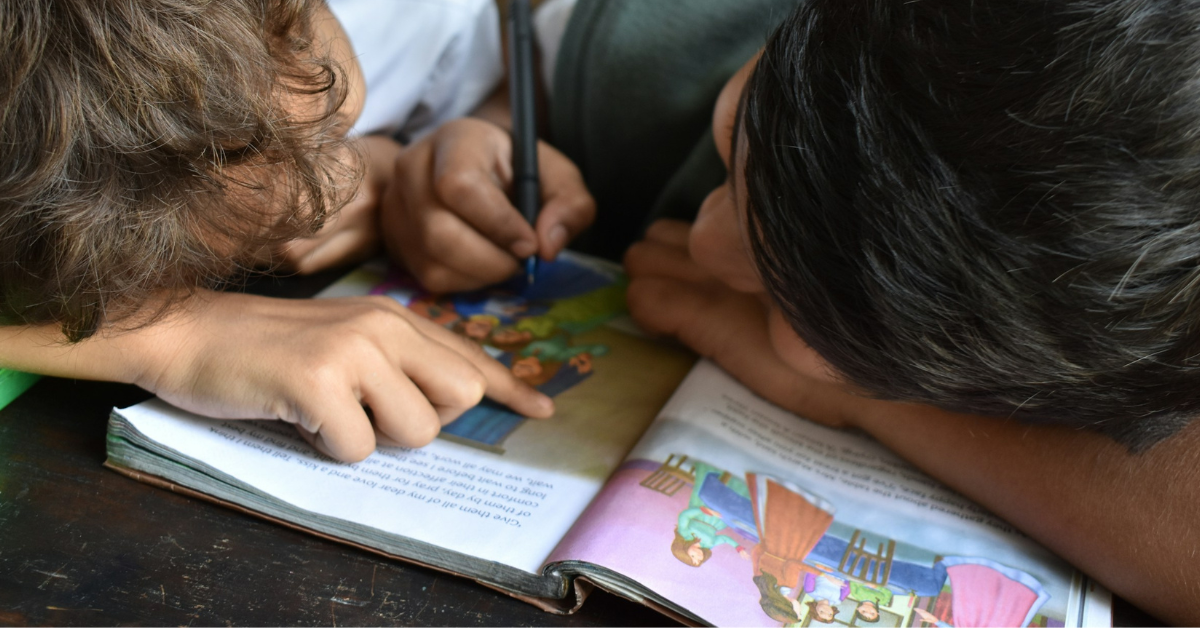Exploring the Evolving World of Children’s Picturebooks: Non-linear Interactive Picturebook

Author: Huiling Chen
PhD Researcher, School of Design, University of Edinburgh
The landscape of children’s literature is rapidly evolving, with significant changes in how children interact with picture books. Traditional linear narratives are being challenged by non-linear interactive picture books, offering young readers novel reading experiences. But what exactly are these books? And how do they foster children’s emotional development?
For years, picture books have been acknowledged for their role in helping children navigate their emotions. Existing research indicates that understanding and managing emotions are crucial for children’s short-term and long-term social skills and behavior (Zahn-Wacler & Friedman, 1996; Denham, 2003). Developing emotional literacy can assist children in better managing their feelings and fostering positive relationships with others. Emotional awareness is key to building strong connections, resolving conflicts, and promoting overall well-being (Goleman, 1996). As children’s cognition develops, there are individual differences in how they perceive and interpret emotions. Children may perceive and express emotions differently, and they may struggle to articulate these emotions verbally (Xu & He, 2006).
What’s Non-linear Interactive Picturebook? What new perspectives do they provide to give children a new reading experience?
The combination of images and text in picture books offers a multidimensional reading experience, allowing children to explore various emotional scenarios. This combination enables children to better understand and express their emotions through language. Moreover, picture books often present alternative emotional experiences, expanding young readers’ understanding of emotions beyond their own life experiences.
However, despite the potential of picture books to promote emotional development, many existing books lack depth in emotional storytelling and literacy. Few truly capture the essence of children’s emotional worlds or consider how stories interact with readers. Enter non-linear interactive picture books. These books depart from traditional linear narratives, inviting readers to actively engage with the story. Unlike traditional 2D books, these books encourage readers to engage all senses, not just sight.
In recent years, the focus of picture book research has shifted from postmodern features to social issues and child-centered approaches. While postmodernism brought uncertainty and fragmentation to the industry, new approaches prioritize children’s agency in storytelling. Breaking traditional narrative structures isn’t as important as providing stories with conflicting narratives that challenge readers’ cognitive abilities. As McCauley (1991) stated in his Caldecott Lecture, ‘Thinking non-linearly makes sense’. Therefore, we speculate that non-linear storytelling can help young readers grasp the complexity and twists of stories and life.
To better understand how children interact with non-linear interactive picture books and the potential emotional responses, research is underway. Using qualitative methods, researchers aim to uncover the emotional themes embedded in these books and observe children’s interactions during reading. Insights gained from these studies will inform the design of future picture books, meeting children’s emotional needs and expectations.
In conclusion, non-linear interactive picture books represent a promising frontier in children’s literature, providing rich opportunities for emotional exploration and cognitive development. By adopting these innovative storytelling approaches, we can create a new generation of picture books that entertain while nurturing children’s emotional intelligence.
Reference:
Goleman, D. (1996). Emotional intelligence: Why it can matter more than IQ. London: Bloomsbury Publishing.
Macaulay, D. (1991). Caldecott acceptance speech. The Horn Book Magazine, 67(4), 410-421.
(Doctoral dissertation).
Xu, Q., & He, J. (2006). A review of research on the development of children’s emotional understanding [儿童情绪理解发展的研究述评]. Advances in Psychological Science, 1.
Zahn-Wacler C., & Friedman, R. J. (1996). Japanese and United states preschool children’s responses to conflict and distress. Child Development, 67, 2462-2477.
About the author:
PhD candidate, School of Design, University of Edinburgh
Email address: s2439151@ed.ac.uk
Huiling Chen is a PhD candidate at school of design at the University of Edinburgh, and a freelance illustrator and interactive picturebook maker. Her research interest is specifically on Nonlinear interactive picturebook that investigating the use of multi-modal interactive as storytelling elements to support children’s emotional literacy.




Comments are closed
Comments to this thread have been closed by the post author or by an administrator.